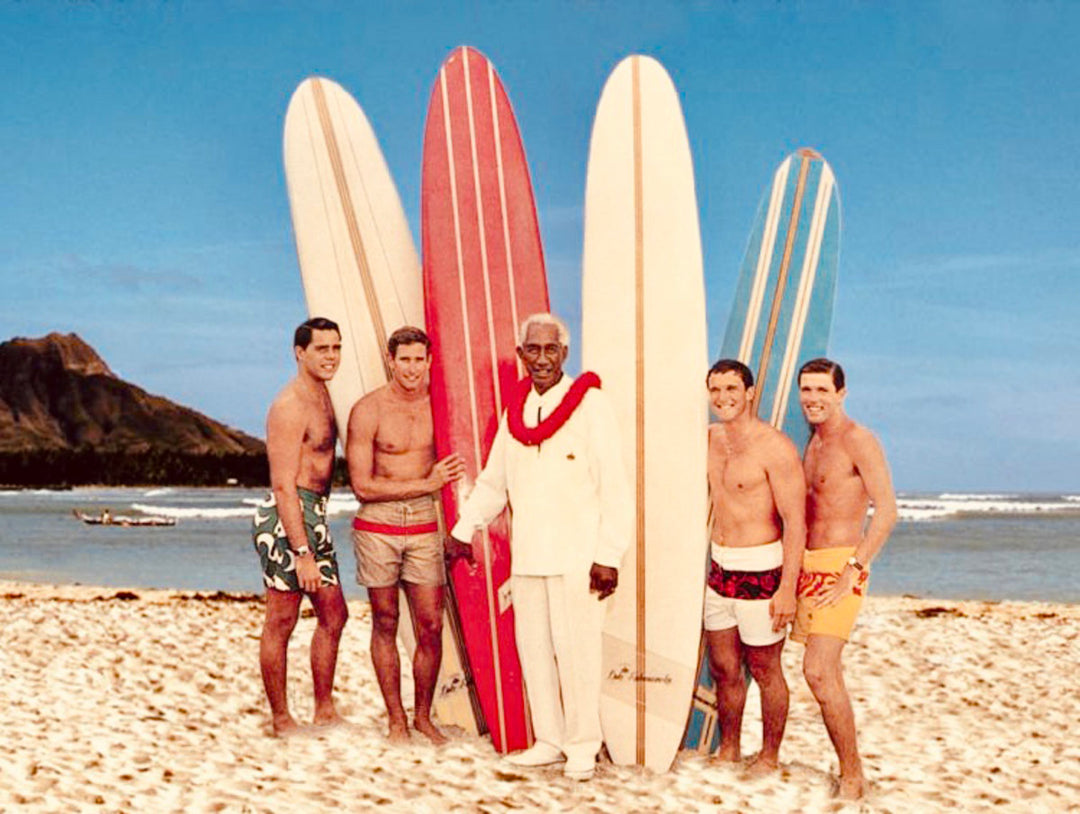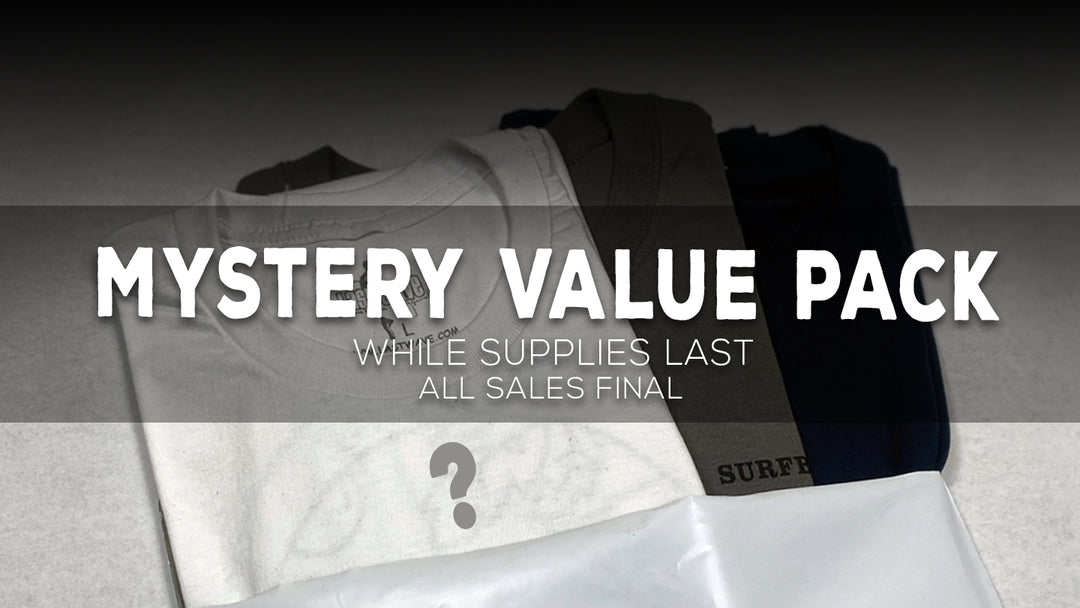ANATOMY OF A T-SHIRT

Since 2005, Last Wave has been working to offer quality t-shirts at a fair price. Realizing that not everyone is looking for the same features in a t-shirt, one of the challenges has always been choosing garments that work best for the greatest number of our customers. Gone are the days when the only real option was the good old white Penny’s Towncraft cotton t-shirt that many of us grew up with. Nowadays, the multi-billion dollar t-shirt industry has more manufacturers than ever, offering a myriad of choices in fabrics, colors, shapes and styles. What I hope to do in this article is explain a little about the modern t-shirt; not all t-shirts are created equal, and that remains one of the important issues for Last Wave!
Background
U.S. soldiers serving in the First World War noticed that European troops wore lightweight cotton undershirts beneath their heavy wool uniforms to keep cool during the summer months, and it didn’t take long for the Americans to catch on. Because the simple design resembled the letter ‘T,” these undershirts quickly became known as “t-shirts.”
But they were still considered underwear, and it took Hollywood notables like James Dean, John Wayne and Marlon Brando to change that. In 1951, Brando stunned U.S. moviegoers when his t-shirt was ripped off his chest in A Streetcar Named Desire. A few years later, James Dean helped the t-shirt become accepted outerwear in A Rebel Without A Cause.
In 1961, Floyd Smith of Surfboards by Gordon and Smith invited local surfers to bring their own t-shirts to his San Diego shop, where he had the classic G&S logo screened on them for free – a simple but effective marketing ploy! The surf t-shirt soon became the popular lifestyle statement it is today. As the popularity of surfing boomed, surf t-shirts found their way onto the silver screen. We’ve already talked about the how a Dewey Weber t-shirt ended up in American Graffiti (1973), and how about Robert Duval sporting an army green Yater Surfboards tee in Apocalypse Now (1979)?

Materials
Knit Fabric

These days, t-shirts are made of 100% cotton, various combinations of cotton and polyester, tri-blends and 100% polyester. Tees are always made from a knitted fabric as opposed to woven one. Knitted material is made by interlacing one single, continuous thread to produce a braided look.
Woven Fabric

Woven fabric is made using a series of different crossed threads called “warps” (longitudinal) and “wefts” (latitudinal), which creates an “over/under” appearance. Because of the way it’s made, knit fabric is stretchy, durable, breathable and soft. It also lends itself well to screenprinting due to its smooth finish. The graphics show the difference in appearance between knitted and woven fabrics.
Of the nearly 20 different knit types, Jersey knit is most frequently used for t-shirts. Its name dates back to medieval times, when the fabric was first produced on the island of Jersey – an island in the English Channel. Jersey knit fabric is relatively inexpensive to manufacture yet is versatile, comfortable and durable. We realize that the weight of the material used in the tees we offer is important to you. When you read one of our typical product descriptions, “…printed on a 6.0 oz. heavyweight cotton tee,” that means the material used to make that shirt weighs 6.0 ounces per square yard. General industry standards rate the weight of t-shirt material as follows:
Very light: 3.0 ounces/yard
Standard: 4.5 to 5.3 ounces/yard
Heavyweight: over 6.0 ounces/yard

We believe that the majority of Last Wave customers prefer classic cut (as opposed to a more fitted look), heavyweight, 100% cotton tees, so that’s primarily what we offer. However, we always welcome your suggestions on how we can improve our product line!
I can’t leave the subject of t-shirt materials before mentioning ringspun cotton thread vs. conventional thread, and talk a little about cotton/poly blends. First, ringspun cotton thread is different from conventional thread in that it goes through a spinning process that softens and straightens each fiber in the thread, so the fibers are very even and unidirectional. Ringspun thread is then combed to remove any remaining impurities or imperfect strands. The result is a much softer feel to the tee, but slightly more expensive. We have offered several different 6.0 oz. ringspun cotton tees over the years, which seemed to get mixed if not mediocre reviews.

Finally, cotton/poly blends combine the features of cotton with those of polyester. Cotton is soft, breathes well, absorbs moisture, and screenprints well. Polyester wicks moisture well, is durable, dries quickly and resists wrinkling. The bad news about cotton is that it wrinkles more, fades easier, and can shrink a bit. On the other hand, polyester isn’t biodegradable, doesn’t breathe well, and traps bacteria significantly more than natural fabrics. This explains why 100% polyester garments can really set off the body odor alarms!
At Last Wave, we like to use either 100% cotton blanks or cotton/poly blends with a low percentage of polyester (10% to 20%). The main reason we use a few cotton/poly blends is that “heathered” garments all have at least some poly in them. “Heathered” refers to a soft, muted color that is achieved by blending different fibers (like cotton and poly) and different colors into one yarn. The garment appears to have small specks of white mixed in with the main color, giving it a sort of vintage look with some texture. We like heathered tees because they have an updated look yet are sporting a classic surf logo! Kinda cool...
Construction

Manufacturing a modern t-shirt has become a highly automated process. Special machines integrate cutting, assembling and stitching…steps that were once done entirely by hand and required a ton more time. There are two basic ways t-shirts are made – tubular and side-seam construction. As the term suggests, the fabric in tubular-made tees is actually woven into a tube shape. The tube of fabric is cut in sections, then the sleeves sewn on. Sewing the collar and bottom hem completes the shirt. Tubular construction simplifies the production process somewhat by reducing the number of seams that need to be sewn, but tubular shirts often have a boxier, more generic fit. They may also have a tendency to twist more than a side-seam tee.
Side seam t-shirts are built by sewing pre-cut, flat panels of material together at the sides of the garment. They are then finished in a similar manner as their tubular counterparts. Some people prefer side-seamed tees because there is more versatility in terms of fit, while others find the seams uncomfortable and therefore prefer a tubular design.
Summary

This has got to be more than you ever wanted to know – or cared to know - about a t-shirt. We are licensed to print a little more than half the brands in the Last Wave collection, so we are able to influence the type of t-shirt blanks on which we print.
Conversely, we have very little say in what kind of t-shirt blank is used for our non-licensed products. Therefore, there will be subtle differences in the colors, weight, dimensions and overall fit of our garments, which we always endeavor to spell out in our product descriptions. For our licensed brands, we like to shake things up a bit by throwing in a few heather blank options, some fresh colors, and a ringspun tee or two. I want to close by restating that we really do look forward to your input on what we offer in our line. We want to carry what you like to wear!
Until next time,
Ted









